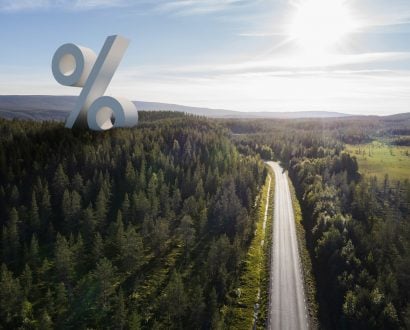More complex buying processes, customers who are increasingly self-educating, plus a far noisier and more competitive environment for lead generation are transforming how sales and marketing teams approach potential customers.
In light of all of these changes, what can we expect B2B sales to look like in 10 years’ time?
The enterprise buying process is more complex than ever before, and the average B2B deal now has no less than 8 decision-makers, a 43% increase from 3 years ago. And at the same time, B2B e-commerce is growing, with Alibaba forecasting a $6.7 trillion global market for B2B e-commerce by 2020.
The path forward for sales and marketing teams is under debate. Some envisage that software and algorithm-driven solutions will reign supreme, but can predictive analytics and smarter marketing automation replace sales talent?
On the flip side of the debate, the answer is more nuanced: better alignment between marketing and sales and more strategically-informed sales reps will become the bread-and-butter behind a highly successful sales approach. Of course, classic sales skill sets are not necessarily at odds with emergent technologies.
Re-imagining the customer journey
Thanks to developments in customer analytics capabilities, businesses have never had more information at their fingertips to scrutinise exactly what drives a customer to a purchase decision.
The data demonstrates an evolving sales process that is increasingly driven by the buyer – not just in B2C sales, but in B2B as well. While the numbers differ greatly between industries, research indicates that the average B2B buyer completes 50-90% of the sales process before even engaging with sales. Naturally, many sales teams are moving their attention to later-stage prospects.
And with this in mind, marketing teams are on the hook for improved and more actionable leads to supply to their sales counterparts. Practicing an engagement marketing strategy that focuses on the customer, the point they’ve reached in their purchase journey, providing them with the right materials at the right time, and helping the sales team with the best time to contact the customer, will be crucial to success over the next 10 years.
So what can we take away from this? A superior understanding of how customers find you – and how they actually want to be sold to – means restructuring the sales funnel and customer picture. Otherwise, the ‘brute force’ method of selling is far less effective.
An evolving union between sales and marketing
Conventionally, sales and marketing have interacted more like opposing players in a turf war than allies working together towards a unified goal. Some innovative companies have realised that this particular model is out-of-date, and are now working together to better align their teams. Even today however, only 10% of marketing and sales professionals say their demand generation and sales enablement/training programs are entirely aligned.
I foresee the war between sales and marketing ending, as savvy marketers are becoming more and more analytical and making data-driven judgments on creative campaigns, while clever sales people are employing customer psychology and relationship-building tactics to become highly-competitive closers.
This takes the form of marketing supplying not just a simple list of form fills to their sales counterparts, but rather applying a lead intelligence program that equips them to indicate actual “marketing-qualified leads” that are genuinely ready to engage with sales.
Integration of these 2 teams will be crucial to company success, as they will be better equipped to tag team and deal close, instead of functioning in silos. Aligning the 2 functions will mean a better understanding of the customer buying journey, aligning incentives for both teams to ensure bottom line accountability, and leading with a clear and united focus that nurtures a culture of organisation-wide partnership and cooperation between the 2 teams.
Embracing the new normal
With the upsurge of lead intelligence, the eruption of B2B e-commerce and an increasing focus on automation, the outlook has never looked brighter: by just 2020, the total B2B sales market is forecasted to hit $25 trillion.
The iconic “Always Be Closing” intonation popularised by Glengarry Glen Ross has worked for decades of successful sales teams. Hasty shifts in technology will likely continue to underline the rudiments of selling and become the new normal moving forward, while marketing and sales finally work collectively to understand the buyer, and ultimately, speak their language.








Hi Michael,
Great article. Can you please share a source for the $25B projection for 2020? I’m working on some b2b research and I’m seeing a variety of projections from $7T to your $25T.
Best,
Don